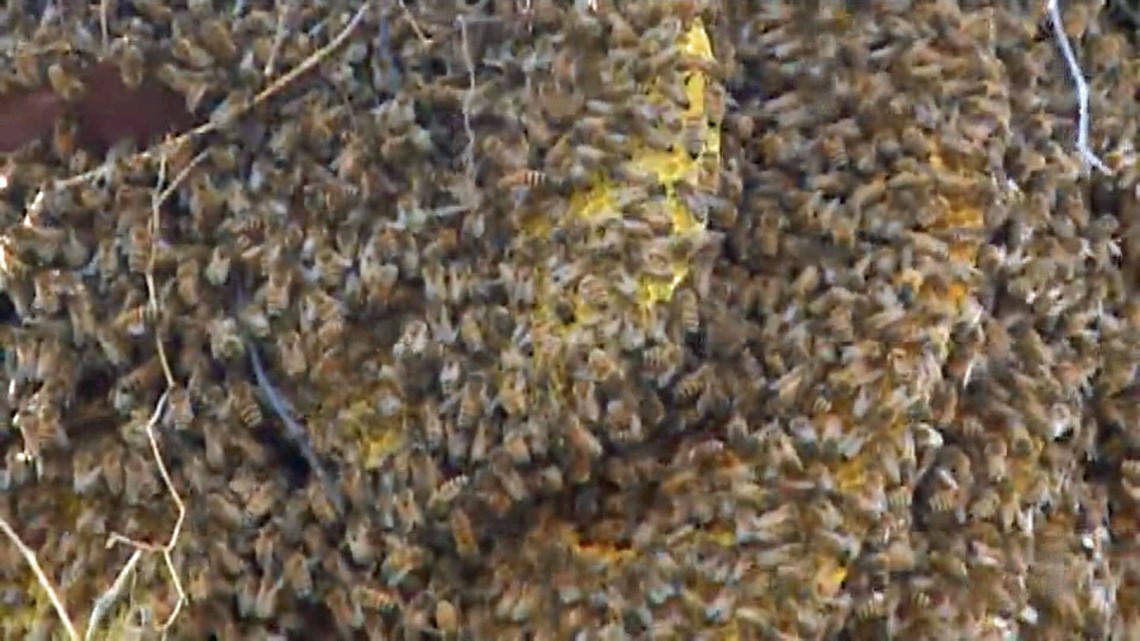
Africanized honeybees, infamous for their aggression and dubbed “killer bees,” were originally bred to boost honey production.
COMANCHE, Texas — Known for their ferocity, Africanized honeybees, or “killer bees”, were first bred in Brazil in 1956 to boost honey production in warm climates, but quickly gained notoriety after 20 colonies escaped and began spreading across the Americas, according to an article on the Natural History Museum of London website.
A hybrid of European and African honeybee subspecies, Africanized bees inherited aggressive defense behaviors from their African lineage, often mobilizing entire colonies to attack perceived threats, swarms of up to 800,000 have been reported, the article goes on to say. Though each sting carries less venom than a typical honeybee, their overwhelming numbers make them dangerous; around 1,000 stings can kill an adult human.
Since arriving in the U.S. in the 1990s, their territory has expanded through warm regions like Texas and California, though colder climates slow their spread. Sensitive to vibrations, they’ve been known to mistake mowers or distant movement as threats, prompting unprovoked assaults on humans and animals.
Despite the danger, Africanized bees may offer hope amid Western honeybee declines caused by pesticides, mites and disease. More resistant to Colony Collapse Disorder, they groom effectively and damage parasitic Varroa mites, suggesting a potential role in stabilizing bee populations, if their aggression can be tempered, the article states.
The article also points out that in Puerto Rico researchers found the bees naturally became less aggressive over time, adapting to an environment with fewer predators. While their violent reputation persists, ongoing studies suggest that with careful breeding or natural adaptation, these controversial pollinators could one day help save the world’s bees.
More on KCENTV:
Read more on KCENTV.COM:
